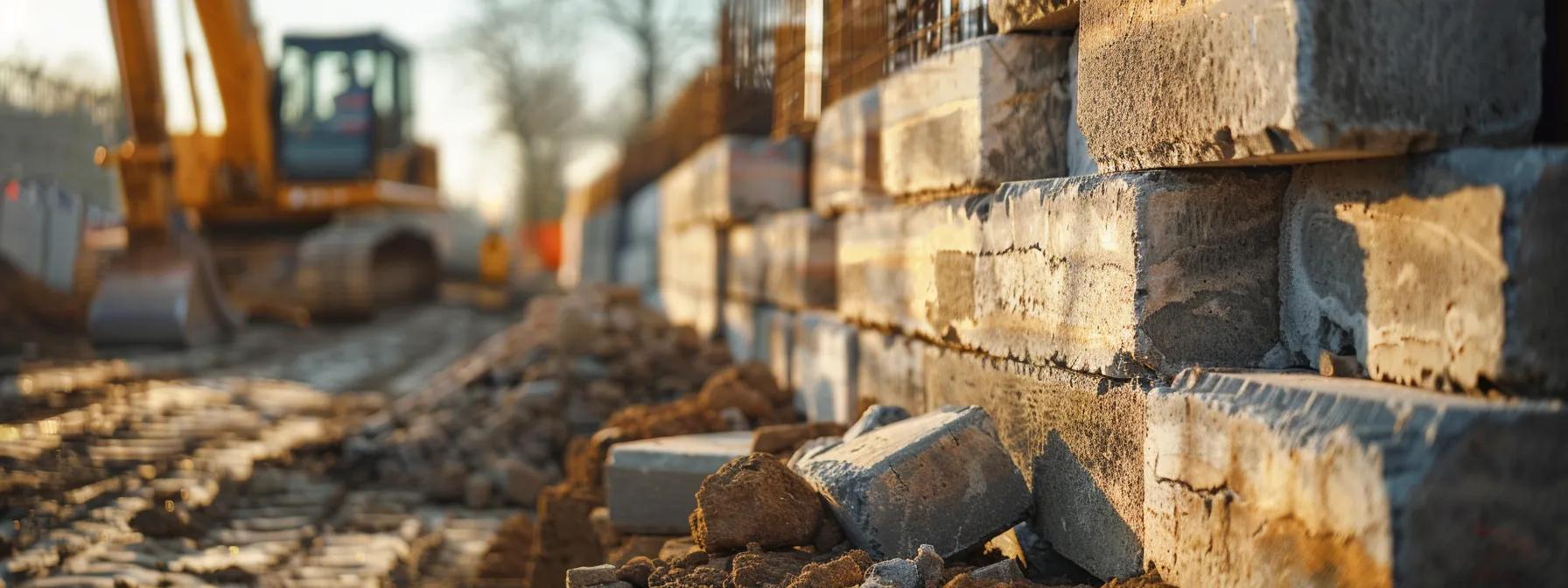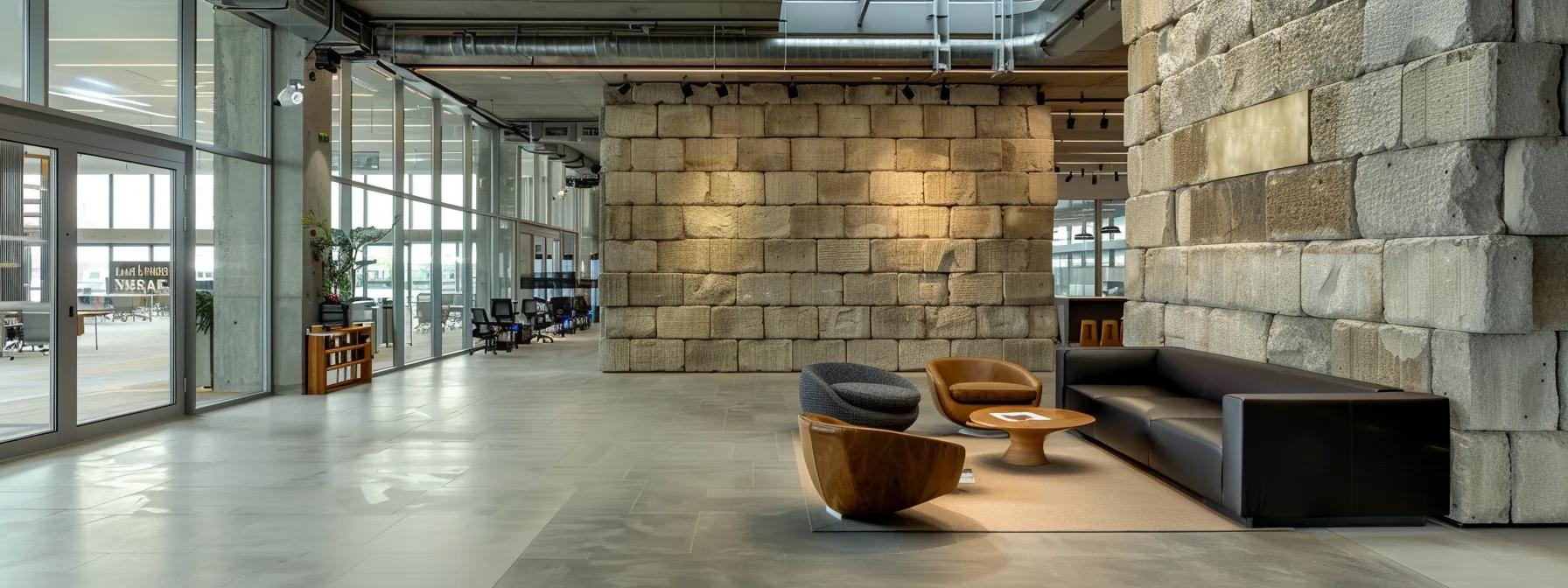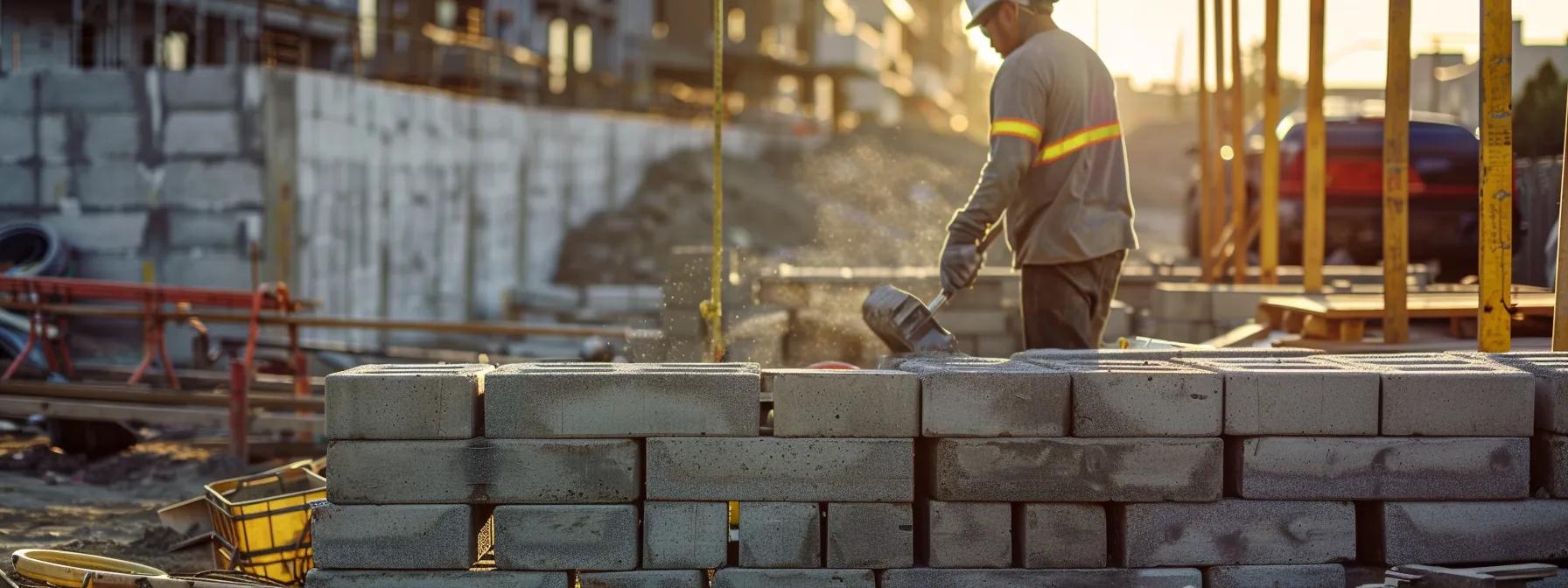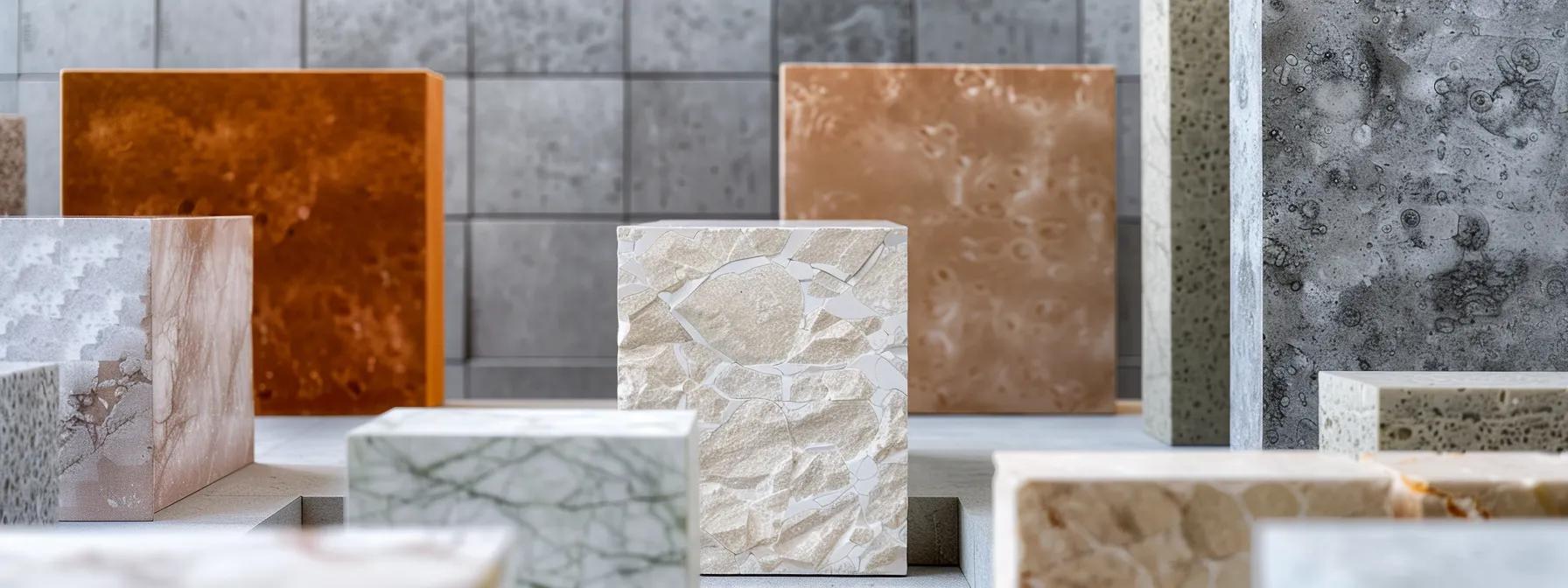Welcome to our Blog
The Brainerd Boulders Blog

Tips for Selecting Quality Big Retaining Wall Blocks
How to Choose the Best Big Retaining Wall Blocks for Your Project: Types, Materials, Installation, and Cost
The process of selecting the right big retaining wall blocks can significantly impact the longevity, stability, and visual appeal of a landscape. Homeowners and business owners in Central Minnesota and the northern Twin Cities metro area require solutions that combine durability with cost-effectiveness, especially in harsh winters and varying foundation conditions.
This guide outlines the different types of big retaining wall blocks, compares materials from concrete to natural stone, and provides clear, actionable guidance on planning, designing, installing, and budgeting for these structures. It emphasizes retention technologies such as gravity walls, cantilever designs, and the use of geogrid reinforcements. By the end, readers will understand how to choose the best retaining wall blocks and appreciate the underlying engineering principles that ensure their performance.
In the following sections, each critical aspect is explored—from types of retaining wall blocks and material selection to design strategies, installation steps, cost considerations, and frequently asked questions. This comprehensive guide delivers the dependable, clear, and professional advice that Pine Ridge Lawn & Landscape is known for.
What Are the Different Types of Big Retaining Wall Blocks?
Big retaining wall blocks are designed for specific applications, offering various benefits in stability, ease of installation, and durability.
What Are Concrete Retaining Wall Blocks and Their Benefits?
Concrete retaining wall blocks are pre-cast units engineered to resist significant lateral soil pressure. They offer uniform size and shape for a tight, consistent installation and high compressive strength to ensure long-term stability. Their design options vary from rustic to polished finishes, making them versatile for both residential and commercial projects. Additionally, these blocks typically incorporate interlocking features, reducing the need for extra mortar and shortening installation time. Reinforcement with geogrid can further increase their load-bearing capacity while proper drainage systems help maintain strength during freeze–thaw cycles. Overall, large concrete wall blocks are cost-effective, low-maintenance, and ideal for large hardscape projects.
How Do Segmental Retaining Wall Blocks Work?
Segmental retaining wall (SRW) blocks feature interlocking mechanisms that allow stacking without mortar. Their design creates frictional shear resistance against the soil, making the wall stable. The interlocking joints transfer lateral loads efficiently, while the heavy block weight provides friction that prevents overturning. Many SRW blocks include cavities for filling with hardscape or aggregate, increasing the overall mass. Their adaptability makes them popular with both DIY enthusiasts and professionals, as they accommodate minor adjustments during installation while delivering a reliable, engineered system.
What Are Natural Stone Retaining Wall Blocks and Their Advantages?
Natural stone retaining wall blocks are valued for their timeless aesthetic and natural durability. Sourced from quarries and cut into consistent sizes, they provide excellent weather resistance and an attractive finish that blends with natural landscapes. Their inherent strength and low processing requirements also yield a lower carbon footprint. Although natural stone offers superior aesthetic value and longevity, their irregular shapes can make the installation more labor-intensive and require precise craftsmanship. For projects where visual appeal and heritage value are priorities, natural stone remains a premier option.
How Do Gravity and Cantilever Retaining Walls Differ?
Gravity retaining walls depend on the sheer mass of the blocks to resist lateral soil pressure, making them simple in design with fewer materials and less complex engineering. In contrast, cantilever retaining walls use both weight and an anchored lever arm to counteract soil pressure, requiring a deeper footing and more sophisticated design. Gravity walls are best for moderate heights and stable soils, while cantilever walls are better suited to taller structures or unstable soils where additional leverage is needed. Choosing between these two types depends on site-specific conditions and a clear understanding of the foundation and geotechnical demands.
Which Materials Are Best for Big Retaining Wall Blocks?

Selecting the ideal material involves balancing environmental conditions, durability, aesthetics, and budget. Concrete and natural stone each have distinct advantages and drawbacks.
How Does Concrete Compare to Natural Stone for Boulder Retaining Walls?
Concrete is widely used due to its versatility, strength, and cost-effectiveness. Pre-cast concrete blocks are manufactured with uniform dimensions and interlocking features that speed up installation while providing consistent load-bearing performance. In contrast, natural stone offers a superior visual appeal and a timeless look but may come with higher labor costs due to more complex installation. While concrete is generally more economical and easier to maintain, natural stone can enhance property value through its unique beauty and resistance to weathering. Ultimately, the choice depends on the project’s design goals, budget, and planned maintenance.
What Are the Advantages and Disadvantages of Different Retaining Wall Materials?
Each material presents its own benefits and challenges:
Concrete Blocks Advantages: Uniform design, high compressive strength, low cost, quick installation with interlocking systems. Disadvantages: May weather if not properly sealed; installation errors can lead to cracking.
Natural Stone Blocks Advantages: Superior aesthetic appeal, timeless look, excellent durability with minimal weathering. Disadvantages: Labor-intensive installation and higher initial cost; irregular shapes may complicate construction.
Composite/Rubber or Recycled Materials Advantages: Environmentally friendly, innovative design, low environmental footprint. Disadvantages: Higher upfront cost and limited long-term performance data; may require specialized installation.
A comparative overview helps property owners select a material that meets both their functional and aesthetic needs while staying within budget.
What Sustainable Materials Are Available for Retaining Walls?
Eco-friendly options such as recycled concrete, reclaimed natural stone, and composite blocks made from recycled plastics are gaining traction. Recycled concrete blocks offer similar performance to new concrete but with reduced environmental impact and cost. Reclaimed natural stone delivers the same natural beauty and resilience while promoting sustainable practices. Composite blocks made from recycled materials also provide strong performance with minimal maintenance. These sustainable options not only lower the environmental footprint but can often be sourced locally, reducing transportation costs and supporting green building practices. Additionally, retaining wall installations made with these materials are becoming increasingly popular among eco-conscious builders.
How Do You Plan and Design a Retaining Wall Project?
Effective planning and design are critical for a successful retaining wall. A thorough evaluation of site conditions, soil type, drainage, and local regulations can determine the best design approach.
What Factors Should You Consider When Designing a Retaining Wall?
Key considerations include:-Site Assessment: Evaluate soil type, slope gradient, and water drainage capacities to determine the wall’s stability requirements.-Load and Pressure: Understand the weight and lateral forces acting on the wall; clay-heavy soils, for example, may require additional reinforcement.-Aesthetics: Select block styles and finishes that complement the surrounding landscape.-Future Modifications: Plan the design with possible future adjustments or expansions in mind.-Local Codes: Consult with structural engineers and local authorities to ensure the design complies with building codes and permit requirements.-Environmental Factors: In climates like Central Minnesota, consider expansion joints or flexible retaining wall systems to mitigate freeze–thaw cycles.
How Do Soil and Drainage Affect Retaining Wall Design?
Proper drainage is essential to prevent hydrostatic pressure buildup behind the retaining wall , which can lead to instability. Site-specific soil analysis helps determine the need for drainage solutions such as gravel backfill, filter fabrics, and perforated pipes. Ensuring proper soil compaction and integrating drainage features in the design minimizes water pressure and contributes significantly to the foundation ’s durability and effectiveness.
When Are Permits Required for Retaining Wall Construction?
Permit requirements vary by locality. Generally, retaining walls under 3 to 4 feet may not require permits, but walls built adjacent to property lines or exceeding these heights usually do. It is essential to check with local building departments and adhere to regulations to avoid delays, fines, or potential retrofits.
How Do You Calculate Material Needs for Your Project?
Material calculations involve determining the retaining wall ’s area and volume based on its height, thickness, and length, and then applying manufacturer guidelines for block density and weight. It is common to add an extra 5% to 10% to accommodate waste and breakage. Accurate calculations help prevent shortages, control costs, and ensure a smooth construction process.
What Is the Step-by-Step Guide to Installing Big Retaining Wall Blocks?

Installing retaining wall blocks requires methodical execution from start to finish, ensuring both contract and long-term performance.
How Do You Prepare the Site and Base for Installation?
Begin by clearing vegetation and debris from the designated area, then survey and mark the retaining wall ’s footprint using stakes and string. Excavate a trench to a depth roughly one-third of the planned wall height, and fill it with compactable gravel to create a stable and well-draining base. Compaction is critical; using plate compactors ensures a firm, level foundation that minimizes the risk of settling or shifting.
What Are the Key Steps in Installing Retaining Wall Blocks?
First Course: Lay the initial layer of blocks directly onto the compacted base, ensuring perfect leveling and alignment.
Subsequent Courses: Stack blocks with a slight batter (setback) to counteract lateral soil pressure, engaging the interlocking mechanism with each course.
Reinforcement: Where necessary, install reinforcement such as geogrid between courses according to manufacturer guidelines.
Backfilling: As you build, add free-draining gravel behind each course to relieve pressure and secure the structure.
Capping: The final course is capped with specially designed coping blocks for an aesthetically pleasing finish.
How Do You Manage Drainage and Backfill During Installation?
Integrate drainage from the start by installing perforated pipes covered with protective fabric at the base. Backfill should be added in layers, each compacted thoroughly to eliminate voids. Incorporating weep holes along the foundation further facilitates water expulsion, minimizing hydrostatic pressure and enhancing structural integrity.
Can You Build a Retaining Wall Yourself?
While building a retaining wall can be accomplished by a skilled DIYer using interlocking segmental blocks and clear instructions, precision in base preparation and block alignment is crucial. Complex or taller walls may benefit from professional expertise to ensure safety and longevity.
How Much Does It Cost to Build a Retaining Wall With Big Blocks?
Costs vary based on materials, wall dimensions, labor, and site-specific challenges. Detailed budgeting must consider both initial expenditures and long-term maintenance.
What Factors Influence the Cost of Retaining Wall Blocks?
Key cost drivers include:-Material Type: Pre-cast concrete blocks are generally more affordable than natural stone, with composites falling in between.-Wall Dimensions: Height, length, and thickness directly affect the number of blocks required.-Design Complexity: Features like baffles and interlocking systems can increase material and labor costs.-Site Preparation: Expenses for excavation, base installation, and drainage systems are significant budget components.-Local Market Conditions: Contractor availability and seasonal demand can influence labor rates. Flagstone
How Do Prices Vary Between Different Block Types and Materials?
As a general guide:
Concrete Blocks: ~$10–$20 per square foot
Natural Stone Blocks: ~$20–$35 per square foot
Composite/Recycled Materials: ~$12–$25 per square foot
A comparative table can help quickly assess options based on cost, durability, aesthetic appeal, and installation complexity.
What Are Typical Installation Costs and Budgeting Tips?
Installation costs can account for up to 50% of the total expense. For example, a straightforward retaining wall using pre-cast concrete blocks might cost around $15–$30 per square foot, including site work, backfill, and drainage. Obtaining multiple contractor quotes, factoring in permits, and setting aside a 10% contingency fund are essential steps for effective budgeting.
What Are Common Questions About Choosing and Using Retaining Wall Blocks?

How High Can a Retaining Wall Be Without a Permit?
Local regulations typically exempt walls under 3–4 feet from permitting if they do not support heavy loads. However, walls adjacent to property lines or exceeding these dimensions often require permits. Always verify with local building departments and foundation.
What Are the Best Retaining Wall Blocks for Sloped Sites?
For sloped sites, interlocking segmental blocks that allow for stable, multi-tiered designs are ideal. These blocks enable a stepped configuration, improved drainage, and easy adjustments to the site’s varying elevations.
How Do You Maintain and Extend the Life of Retaining Walls?
Regular inspection for cracks, settling, or water damage is key. Maintenance includes cleaning the wall face, keeping drainage systems clear, and occasional re-leveling or repointing. In harsh climates, sealing the wall helps combat freeze–thaw damage. Professional inspections can also preempt long-term issues.
Where Can You Find Quality Big Retaining Wall Blocks and Professional Installation?
How to Choose a Reliable Supplier for Retaining Wall Blocks?
Look for suppliers with established certifications, performance data, and positive customer feedback. Local suppliers often provide valuable insights into regional building codes and environmental conditions. A supplier offering on-site consultations and installation support can further streamline your project.
What Are the Benefits of Professional Installation Services?
Professional installers bring expertise in site assessment, engineering, and local regulation compliance, ensuring proper drainage and reinforcement. Their work is typically backed by warranties on materials and labor, reducing future maintenance and repair costs while enhancing safety and durability.
How to Verify Warranty and Support for Retaining Wall Products?
Examine the warranty documentation for coverage details and conditions. Ask suppliers about after-sales support such as routine maintenance, repairs, and technical assistance. Independent reviews and recommendations can confirm the reliability of warranty services.
Frequently Asked Questions
Q: What is the main advantage of using concrete retaining wall blocks? A: They offer high compressive strength, uniform design, and ease of installation with interlocking features and compatibility with reinforcement systems like geogrid, ensuring long-lasting durability even in harsh climates.
Q: How do drainage issues affect a retaining wall’s performance? A: Insufficient drainage can cause water buildup, leading to hydrostatic pressure that may cause cracks, shifting, or failure. Proper drainage systems with gravel backfill, perforated pipes, and weep holes are critical.
Q: What steps can homeowners take to ensure a DIY retaining wall project is successful? A: Begin with thorough site preparation, precise base leveling, and careful material calculations. Follow manufacturer guidelines, include proper reinforcement such as geogrid, and schedule regular maintenance inspections.
Q: Are natural stone retaining wall blocks worth the higher upfront cost? A: Yes, they offer exceptional aesthetic appeal and long-term durability, which can enhance property value despite requiring higher labor input and cost.
Q: When should a permit be obtained for a retaining wall construction project? A: Permits are generally needed when the wall exceeds 3–4 feet in height or is built adjacent to property boundaries. Always verify local building codes before starting the project.
Q: Can professional installation services save money in the long run? A: Yes, they minimize errors, ensure proper drainage and reinforcement, and their warranties can prevent costly future repairs, offering better overall value.
Q: What sustainable materials can be used for retaining wall construction? A: Options include recycled concrete, reclaimed natural stone, and composite blocks made from recycled plastics, all of which reduce environmental impact and may offer local sourcing benefits.
Final Thoughts
This guide has provided an in-depth overview of choosing and installing big retaining wall blocks, stressing the importance of material selection, proper design, and professional installation. By conducting thorough site evaluations, planning carefully, and consulting specialists when needed, homeowners and business owners can ensure their retaining wall is both safe and aesthetically appealing. Balancing cost, durability, and environmental factors results in an effective solution that not only meets landscaping challenges but also enhances property value. Taking these steps will create a long-lasting, reliable boulder that stands the test of time.

Working Hours
Mon: 7am - 5pm
Tues: 7am - 5pm
Wed: 7am - 5pm
Thur: 7am - 5pm
Fri: 7am - 5pm
Sat: Closed
Sun: Closed


